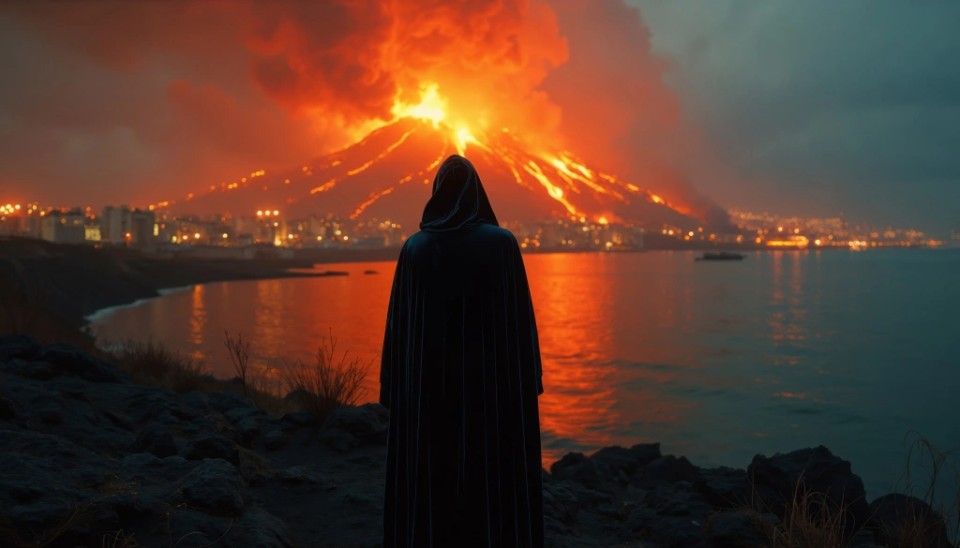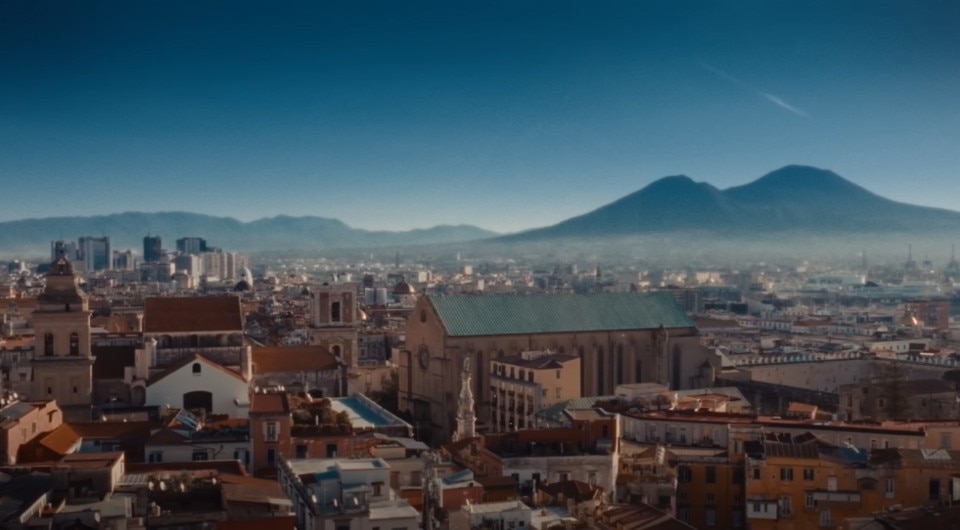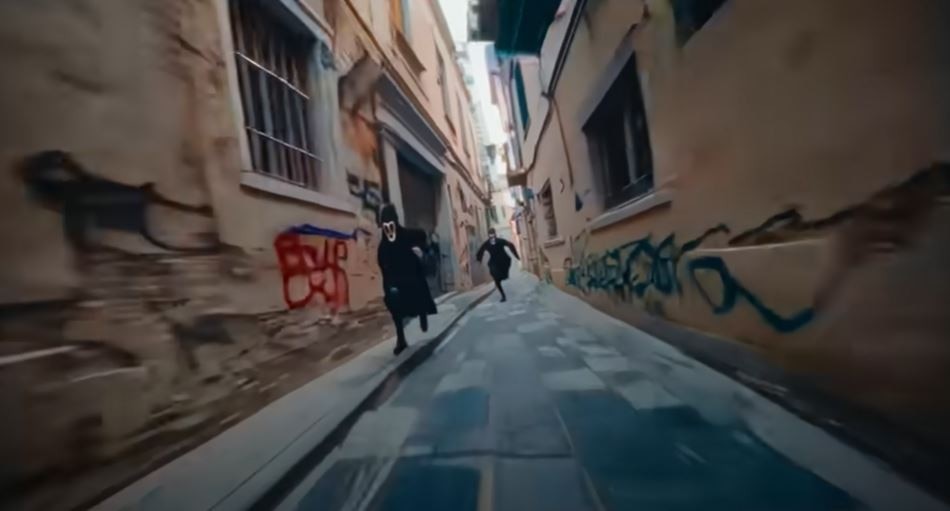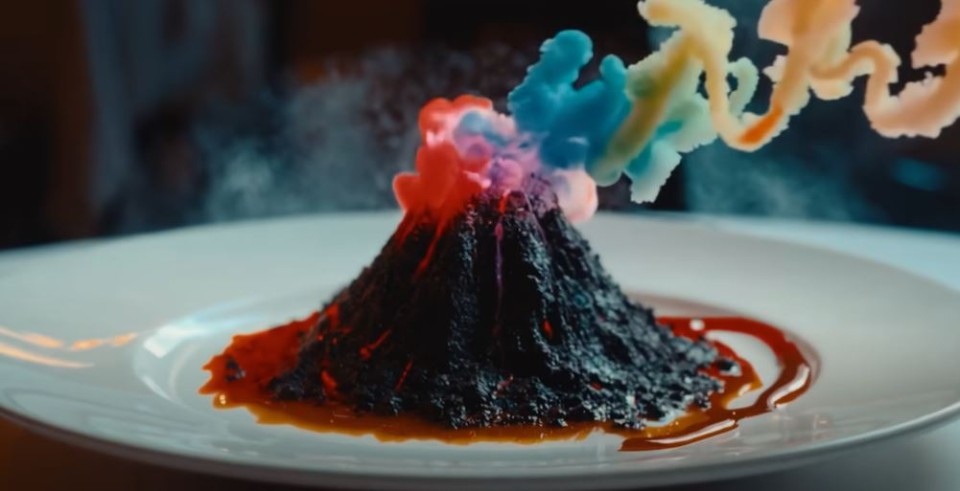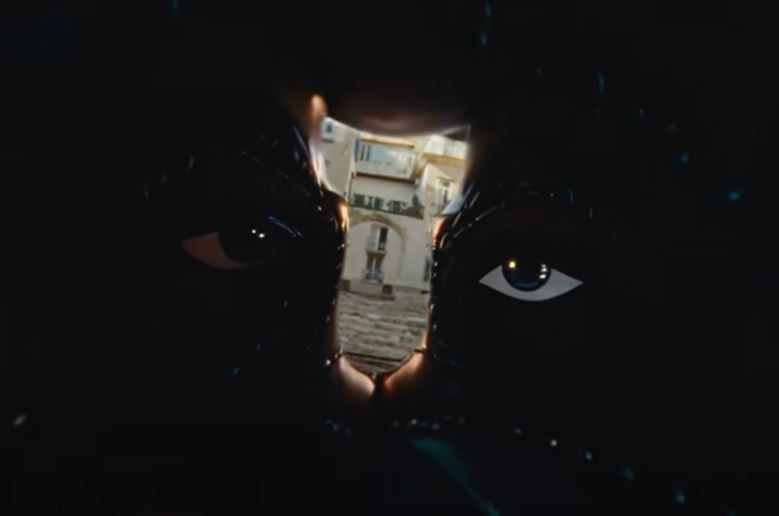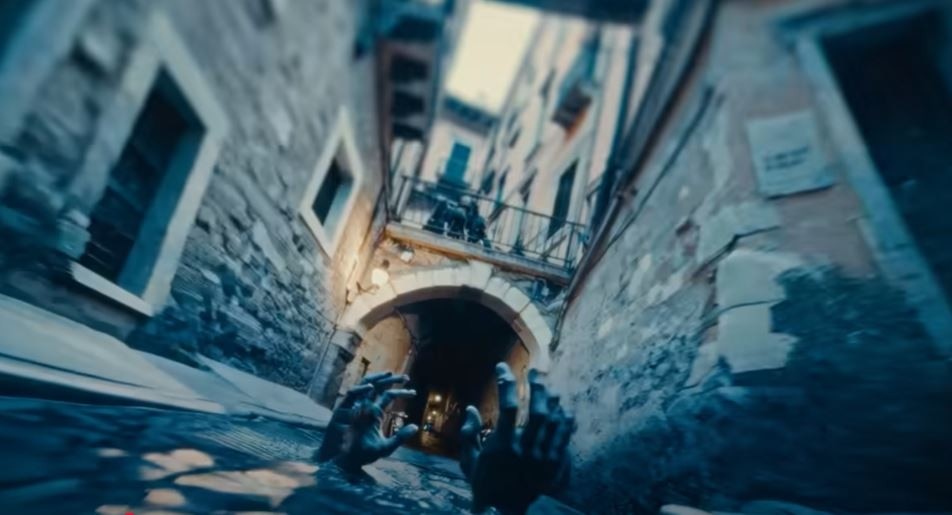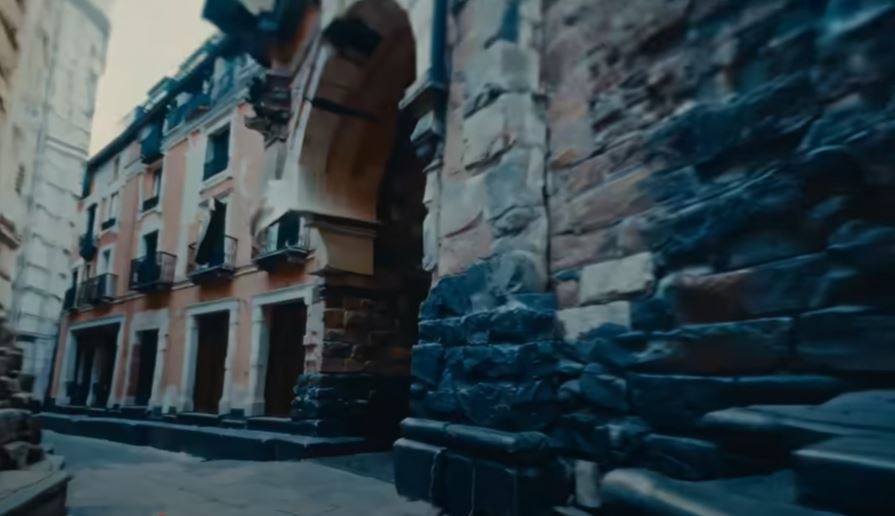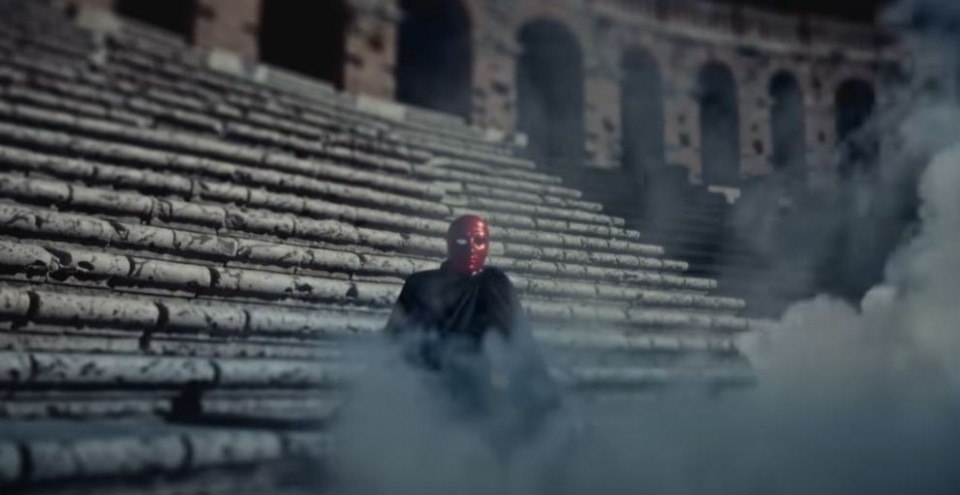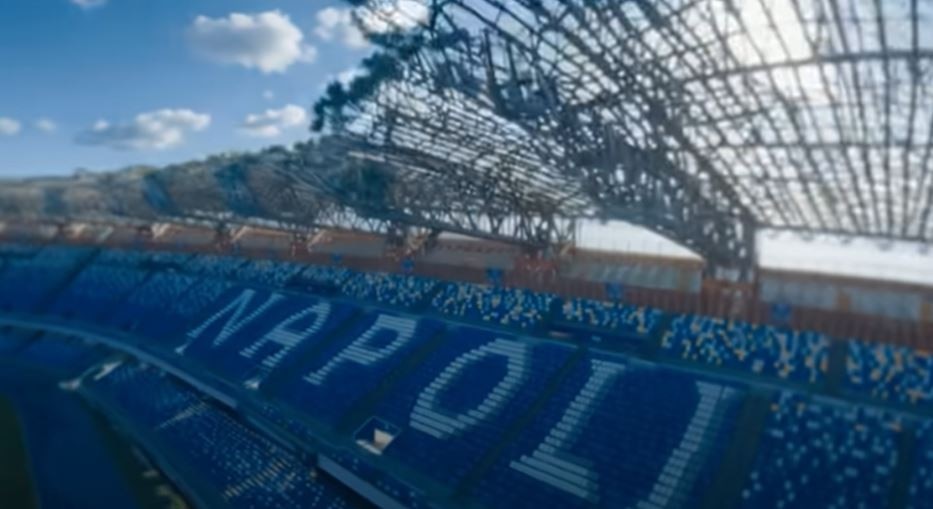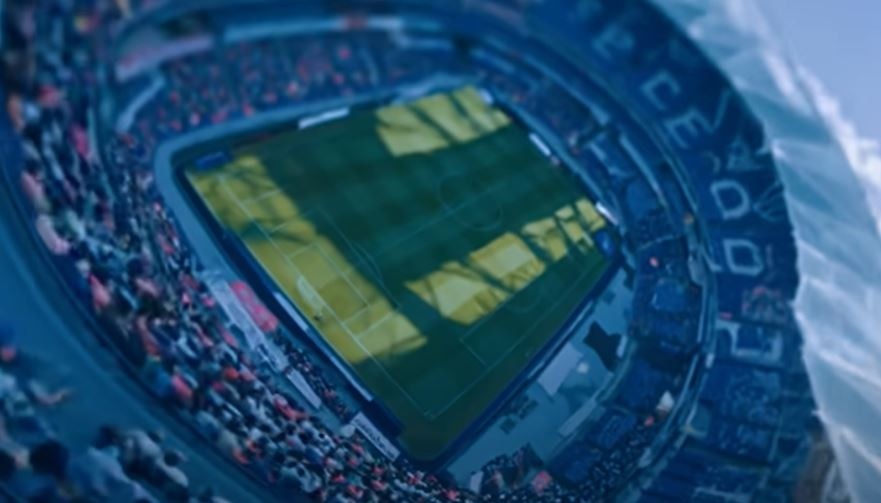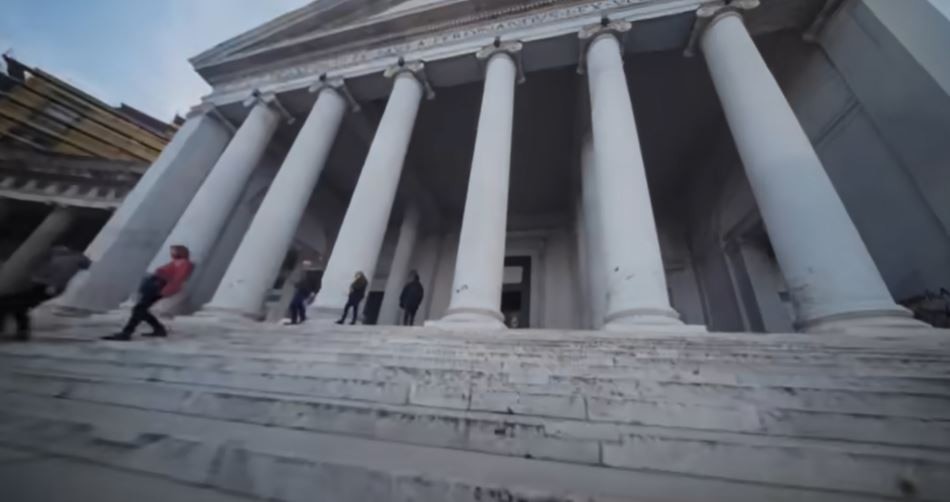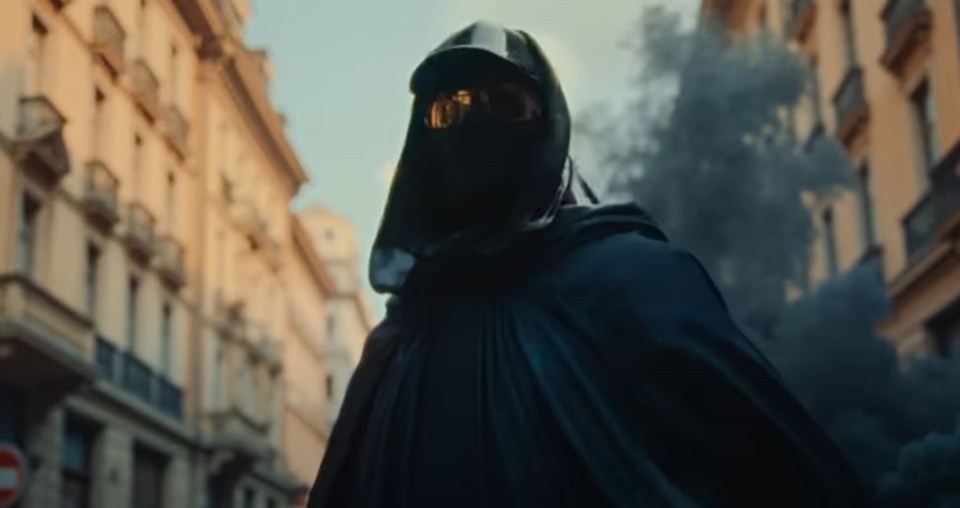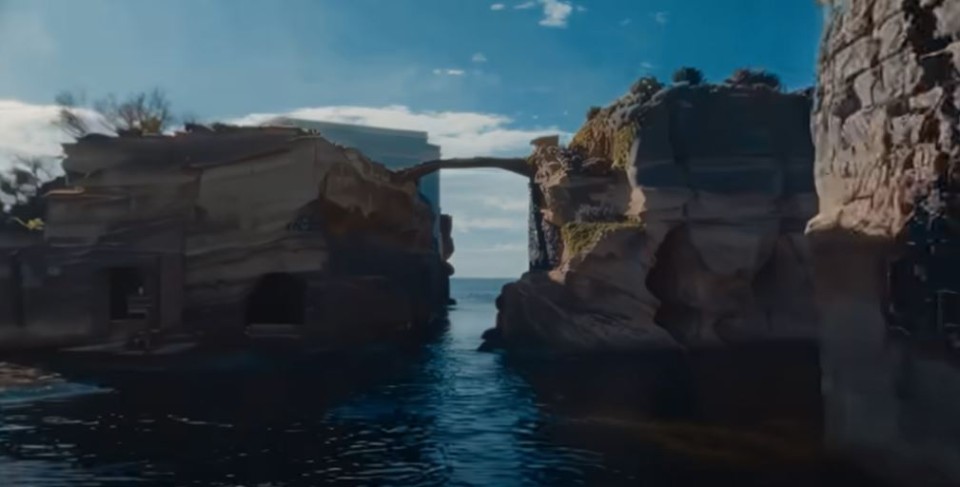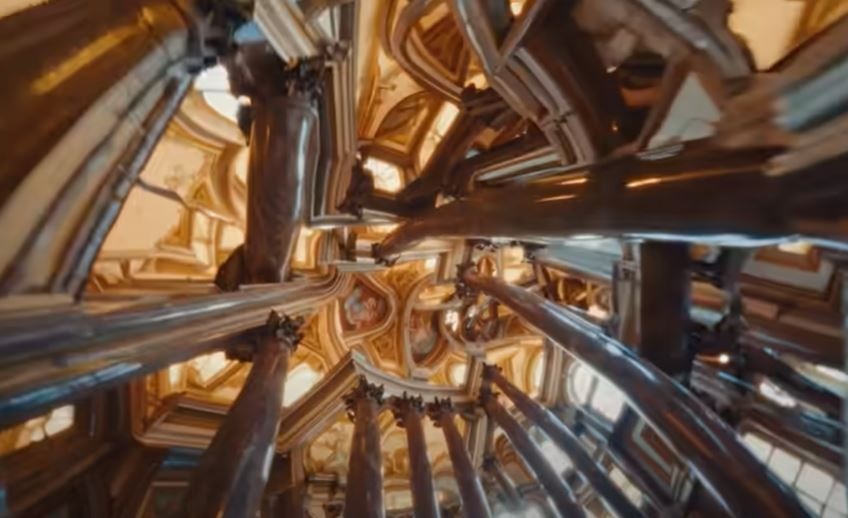When Akasha and Gabriele Ottino were invited to preview Sora, OpenAI’s text-to-video software, they never imagined they’d soon end up creating a music video for Naples’ own Liberato. The call from director Francesco Lettieri took them by surprise. “We had just arrived in Japan, right in the midst of our AI experiments, when Lettieri reached out,” they explain. “He had seen our previous work and proposed an experiment: making a new video for Liberato.”
Lettieri, known for having guided Liberato’s aesthetic for a long time, followed the project closely and provided some specific creative cues. The two directors started from those suggestions and decided to transform Naples’ backstreets into a setting charged with a dreamlike sense of ambiguity. “We wanted a dreamlike atmosphere in which nothing is clearly real or unreal, just like in this amazing city,” they say. “In the end, we chose to highlight the city’s more ‘esoteric’ side.”
Their main idea was to interpret the song’s lyrics and capture the allure radiating from Naples, shown “in all its shades, without limiting ourselves to the touristy parts.” Generative AI played a key role in the process. “We learned to use Sora, a video-generation tool we got to ‘alpha test,’ among the first in Italy. We didn’t even know if it was commercially viable, but we decided to give it a shot.”
We wanted a dreamlike atmosphere in which nothing is clearly real or unreal, just like in this amazing city. In the end, we chose to highlight the city’s more ‘esoteric’ side.
The two directors point out how what initially felt like a hurdle became a catalyst: “Combining professional expertise and traditional techniques with brand-new software—used by only a handful of people—forced us to delve deep into all the available features. We experimented a lot with ‘blending’ images, taking a more artistic rather than strictly cinematic approach. It was fascinating to see how the line between live-action and AI-generated shots could become almost invisible.” They add, “ironically, the scenes captured by drone and gimbal—the only purely real footage—often seemed the most artificial; many assumed those were generated. We liked preserving that ambiguity, the same vibe you sometimes get on the streets of Naples: it can feel like a set, but it’s all real.”
To make the AI-created parts convincing, the directors had to thoroughly research the city’s architectural history. “We wanted a Baroque and Rococo aesthetic—Naples at its most carnivalesque and ornate. We didn’t want it to feel fake, so we studied how best to describe markets, narrow alleys, and cityscapes. With the right prompts, Sora would generate imagery that was half-accurate, half-surreal.” The now-famous “infinite zoom” effect without cuts is well-known in the AI community because it was one of the first techniques to emerge. However, “programs like Sora aren’t actually designed for that effect—still, it was precisely what Lettieri wanted and what we felt fit the concept.”
In short, the production was anything but automatic. “There’s a misconception that you just press a button and get a finished product. In reality, we spent hours finding the right prompts, refining details, selecting scenes, and editing them all together. If you treat AI like a toy, you’ll get incredibly fun results; but if you’re too serious or purely utilitarian about it, it can be frustrating.”
The directors don’t believe AI will replace traditional cinema: “That fear is exaggerated, mostly by people who don’t fully understand the tool. If you want to shoot a classic film, Sora isn’t really the right choice right now. Maybe it could handle certain aspects of post-production or special effects, but in our case, the AI was integrated with real-world footage and established expertise.”
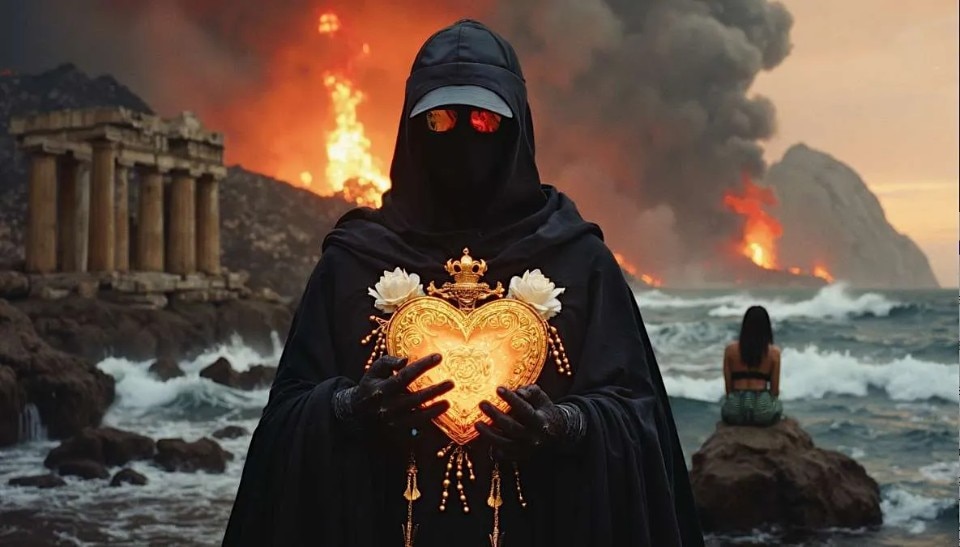
They liken this cultural shift to the difference between orchestral music and electronic music: “They’re both music, but with different aesthetics. AI isn’t here to replace people’s jobs; it’s here to expand horizons. Yes, there’s pushback, driven by fear of job loss, but that’s more a political and systemic issue—these fears come from a market that’s already rotten at the core, where exploitation is the norm.”
It was fascinating to see how the line between live-action and AI-generated shots could become almost invisible.
During the production, they also experienced firsthand the controversy surrounding Sora’s leak, which arose as a protest by some of the other alpha testers. “Sora is backed by a huge AI ‘multinational’—it’s a trailblazer, so of course it’s going to attract criticism,” they say. “But the initial criticisms we saw seemed to gloss over the real issues. Some accused OpenAI of exploiting the alpha artists, but in reality we’d just been invited to test the tool. We could have said no or chosen not to give feedback. Sometimes it even felt like the ‘rebel artists’ were gatekeeping, since they already had certain skills and resources. Their call to refuse a tool offered (albeit for a price) to the masses came off like ‘only we’re allowed to do this stuff.’ Going open source can actually require even more resources and know-how. Criticizing powerful organizations is fair, but not with arguments that only protect your own turf. We never felt exploited; in fact, it was a great professional opportunity. Criticism is necessary, but it often gets tangled in less coherent points—maybe because we don’t have the right framework to address this issue thoroughly yet.”
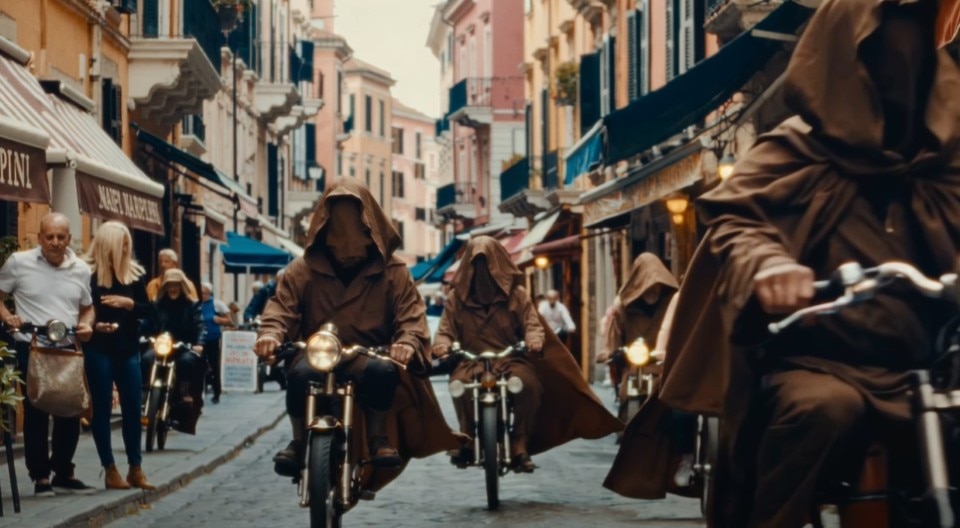
“As artists, we’re not obliged to fully embrace or reject the tool, but we can still do our part by engaging with it, providing feedback, and hopefully improving it.” One of Sora’s biggest flaws, for instance, is its recurring stereotypes. “It’s nearly impossible to generate women who don’t fit a standard beauty cliché—it always defaults to a Western ideal. The same applies to other prompts—if you ask for stressed-out children, they’re always African or Asian. Users need to keep flagging these issues so we can address biases over time, even if many of them are baked in, reflecting the racism and sexism in our society.”
The AI black box is another obstacle. “We can identify the problems and see the potential, but we can’t always fix them ourselves. We need more open, specialized datasets to allow for different types of applications and avoid the same clichés. It’s true, as the ‘leak artists’ say, that these tools should be more open. But they also need to be accessible.” Meanwhile, Gabriele notes, “AI has a big environmental footprint that we can’t ignore. If it’s integrated into traditional video production, it can partially cut down on the ecological impact. The key is making sure these technologies aren’t just corporate decisions forced on people afterward, but part of a public conversation from the start, so we all know the limitations and can handle any risks that might arise in the future.”

Their contact with Liberato, they say, was brief but intense. “We worked mainly with Lettieri, but when we did talk to Liberato, his sense of humor definitely came through—like when he joked, ‘Let’s not use Sora; let’s use assòrt!’” they say with a laugh. “We were a bit worried about how Neapolitans might react, since we’re not very familiar with the city, but in the end, most negative feedback came from those who disliked AI in general. On the other hand, Naples seemed to really appreciate the vibe we created.”
They close with a few thoughts on copyright and the value of technical know-how. “We’re critical of the current copyright system. It’s often used as a shield against AI, but it doesn’t really protect artists—it mostly benefits the usual big players. Art has always been about cross-influences and shared inspiration—it’s strange to pretend we haven’t always borrowed from each other. Sure, AI might reduce the need for certain technical skills, and if that causes job issues, we need a political solution. But we also need to recognize that purely technical ability isn’t the core of creativity.”
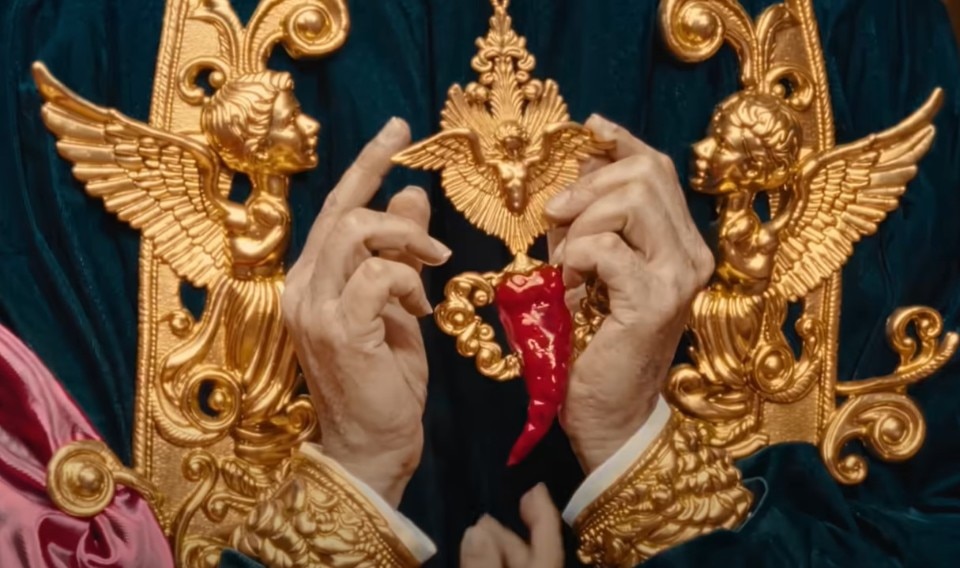
Ultimately, they take a pragmatic stance. “For us, AI is a frontier to explore with curiosity and a pioneering spirit, not a threat to be feared. It has its share of limitations and issues, but constructive criticism is what really matters. We used it to build an ambiguous, dreamlike, experimental video that would’ve been impossible otherwise. AI is great for some things and pointless for others, but in this case, it helped us capture Naples’ overwhelming charm.”


